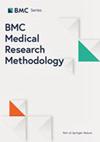纵向联系医院的理论框架:利用《2016-2020 年德国医院质量报告》进行论证
IF 3.9
3区 医学
Q1 HEALTH CARE SCIENCES & SERVICES
引用次数: 0
摘要
在纵向医疗服务研究中,使用 ID 代码对医院进行识别,通常会辅以几个额外的变量,但在代表性和变量影响方面缺乏清晰度。本研究提出了一种医院身份界定的操作方法和一种新颖的纵向识别方法,并通过案例研究进行了演示。该概念将医院视为不断发展的实体,使用自动相似性矩阵识别两个时间点上 "足够相似 "的医院对。该方法包括关键变量选择、相似性评分和容差阈值定义,适合数据源特征和临床相关性。利用《2016-2020 年德国医院质量报告》(GHQR),通过识别与最低病例量要求相关的德国医院,对这种链接方法进行了测试。该方法的成功率(最低:97.9% - 最高:100%,平均:99.9%)超过了传统的医院 ID 代码链接(最低:91.5% - 最高:98.8%,平均:96.6%),通过自动化显著减少了 99% 的人工工作。这种方法植根于对医院身份的全面了解,提供了一种可操作、自动化和可定制的流程,服务于不同的临床课题。这种方法的优势在于可以同时考虑多个变量,并系统地观察医院的时间变化。它还提高了医疗服务研究中纵向医院识别的精度和效率。本文章由计算机程序翻译,如有差异,请以英文原文为准。
A theoretical framework for linking hospitals longitudinally: demonstrated using German Hospital Quality Reports 2016–2020
In longitudinal health services research, hospital identification using an ID code, often supplemented with several additional variables, lacks clarity regarding representativeness and variable influence. This study presents an operational method for hospital identity delimitation and a novel longitudinal identification approach, demonstrated using a case study. The conceptualisation considers hospitals as evolving entities, identifying “similar enough” pairs across two time points using an automated similarity matrix. This method comprises key variable selection, similarity scoring, and tolerance threshold definition, tailored to data source characteristics and clinical relevance. This linking method is tested by applying the identification of minimum caseload requirements-related German hospitals, utilizing German Hospital Quality Reports (GHQR) 2016–2020. The method achieved a success rate (min: 97.9% - max: 100%, mean: 99.9%) surpassing traditional hospital ID-code linkage (min: 91.5% - max: 98.8%, mean: 96.6%), with a remarkable 99% reduction in manual work through automation. This method, rooted in a comprehensive understanding of hospital identities, offers an operational, automated, and customisable process serving diverse clinical topics. This approach has the advantage of simultaneously considering multiple variables and systematically observing temporal changes in hospitals. It also enhances the precision and efficiency of longitudinal hospital identification in health services research.
求助全文
通过发布文献求助,成功后即可免费获取论文全文。
去求助
来源期刊

BMC Medical Research Methodology
医学-卫生保健
CiteScore
6.50
自引率
2.50%
发文量
298
审稿时长
3-8 weeks
期刊介绍:
BMC Medical Research Methodology is an open access journal publishing original peer-reviewed research articles in methodological approaches to healthcare research. Articles on the methodology of epidemiological research, clinical trials and meta-analysis/systematic review are particularly encouraged, as are empirical studies of the associations between choice of methodology and study outcomes. BMC Medical Research Methodology does not aim to publish articles describing scientific methods or techniques: these should be directed to the BMC journal covering the relevant biomedical subject area.
 求助内容:
求助内容: 应助结果提醒方式:
应助结果提醒方式:


